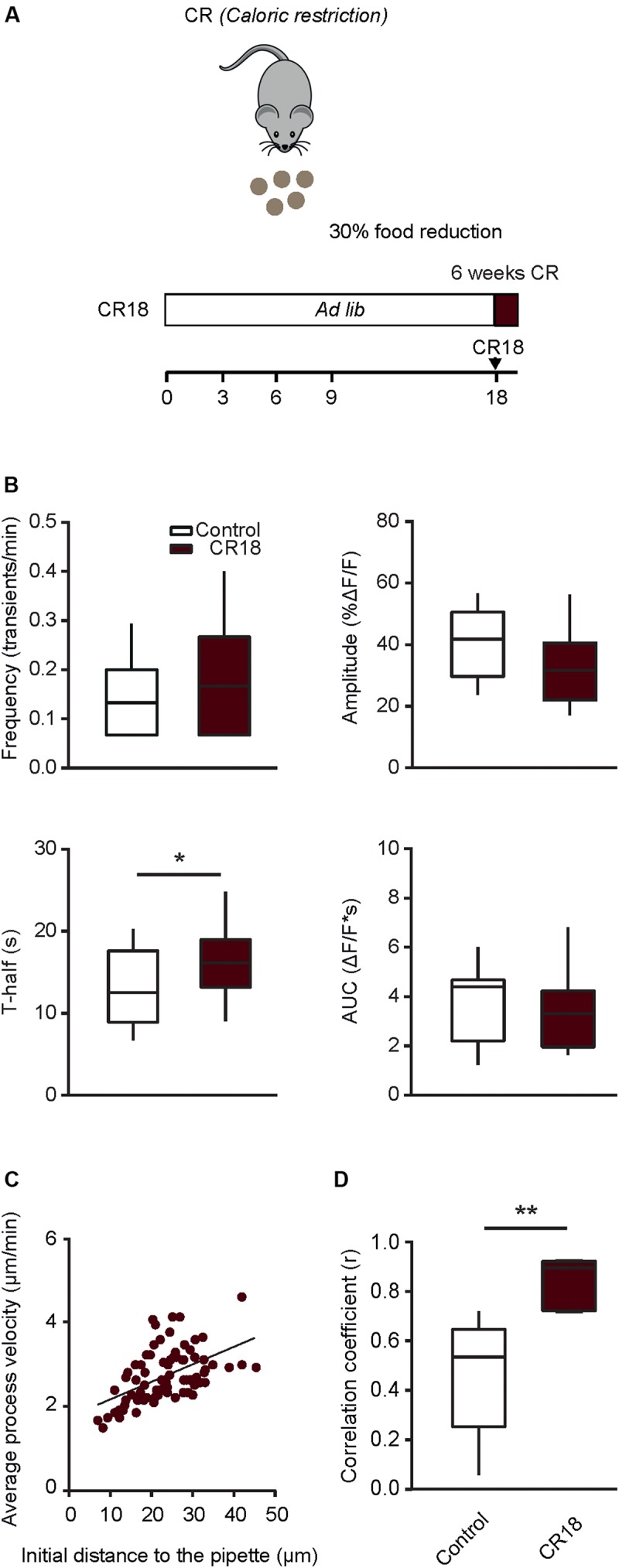FIGURE 7.

Short-term caloric restriction in old mice induces a partial shift of functional properties of microglia toward a younger phenotype. (A) Schematic description of the 6-week-long caloric restriction protocol (CR18) used in old mice. (B) Box-and-whisker plots illustrating the median (per cell) frequency (top left), amplitude (top right), T-half (bottom left) and AUC (bottom right) of spontaneous Ca2 + transients recorded in microglia from 18 to 21 months old control (n = 28 cells, 14 mice) and CR18 mice (n = 19 cells, 10 mice). (C) Scatter plot illustrating the relationship between the initial distance of a microglial process to the tip of the ATP-containing pipette (X-axis) and the mean velocity of the process (Y-axis) in CR18 mice (n = 80 processes, 5 mice). (D) Box-and-whisker plot illustrating median (per mouse) Spearman’s correlation coefficients between the initial distance of microglial processes to the tip of the ATP-containing pipette and the mean process velocity in 18–21 months old control (n = 8 mice) vs. CR18 (n = 5 mice) mice. Statistical differences were determined using Mann-Whitney test (*p < 0.05, **p < 0.01).
